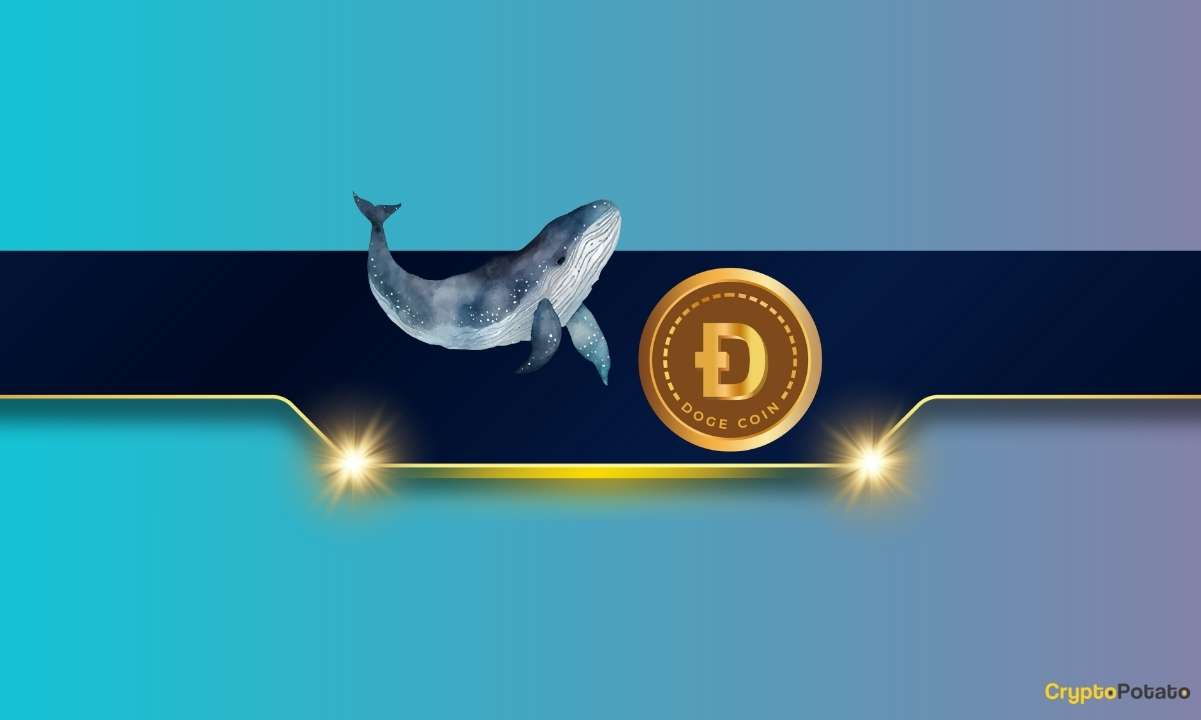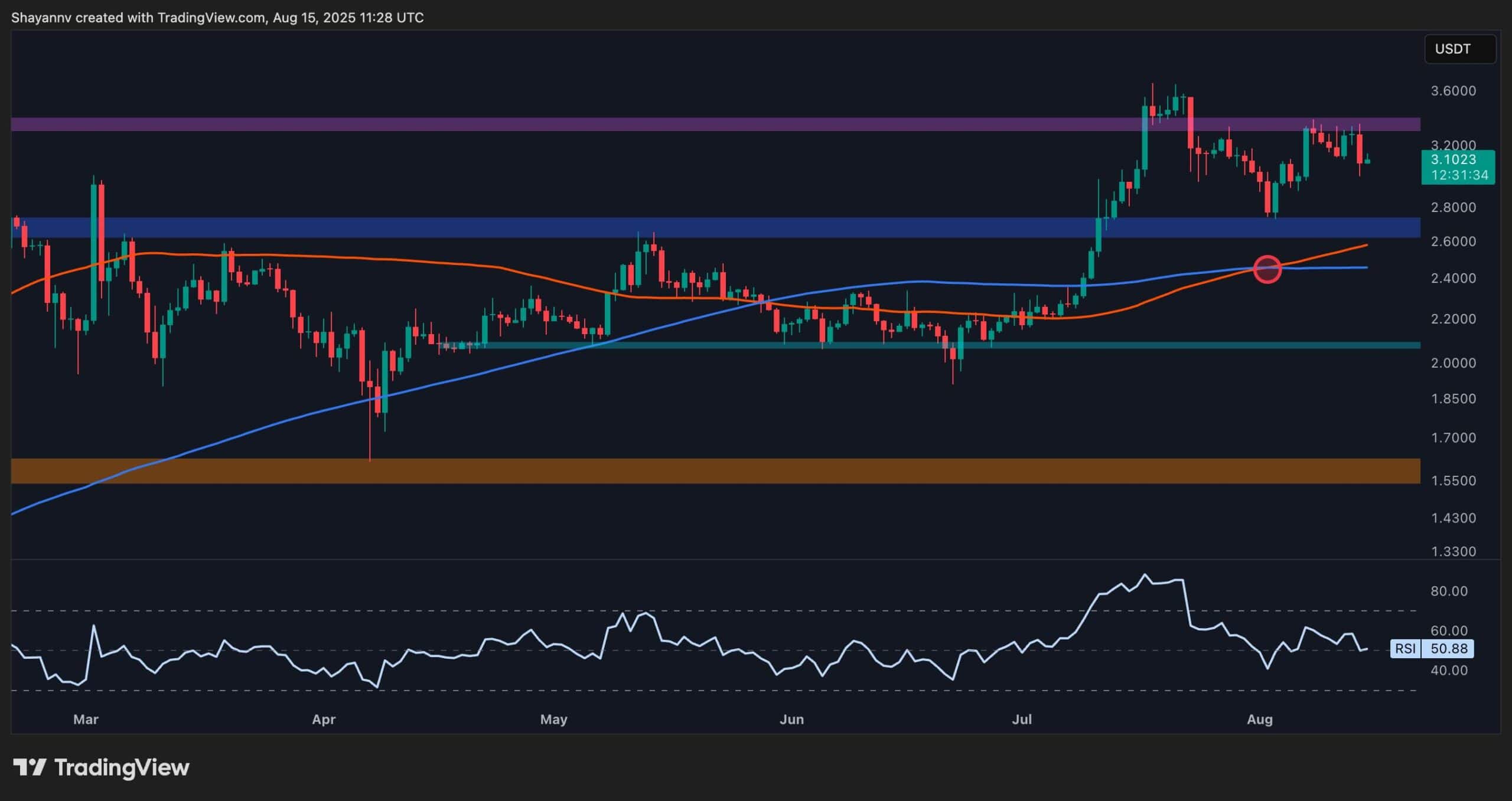Cryptocurrency
What is BounceBit: Liquid Restaking on Bitcoin

The concept of liquid restaking, a topic that has gained significant popularity in recent quarters, offers users the exciting possibility to extract additional value from their staked tokens.
Predominantly, however, this has been applied throughout a variety of Ethereum-based applications.
BounceBit, on the other hand, is delivering a BTC restaking infrastructure designed to provide a foundational layer for various restaking products.
In the following guide, we take a closer look at how BounceBit works, the tokenomics behind its native cryptocurrency, and more. Let’s dive in.
Quick Navigation
What is Liquid Restaking?
Before we explain what BounceBit does, it’s important to understand the concept of liquid restaking that we mentioned above.
You might be familiar with liquid staking protocols and their liquid staking tokens (LSTs). It’s a mechanism that came to prominence with protocols like Lido. Users are able to stake their ETH into Lido (or other protocols) and receive a synthetic representation of this ETH. This is a new token that’s supposed to be pegged to the value of ETH 1:1. They could then use this synthetic ETH to carry out various operations with other protocols that support it.
Liquid restaking, on the other hand, is a process aimed at increasing the economic security of external systems. In essence, you can take your synthetic ETH (your LST) and restake it, receiving another token called a liquid restaking token.
As mentioned above, most of the LRT protocols are increasingly focused on Ethereum because of its Proof of Stake architecture.
BounceBit, on the other hand, is building a BTC restaking infrastructure that’s designed to provide a layer for restaking products on the Bitcoin network.
How do they do it? Well, let’s find out.
What is BounceBit?
In a bid to reimagine Bitcoin’s value, BounceBit proposes an infrastructure designed based on the conviction that Bitcoin should be predominantly asset-driven at the infrastructure level.
BounceBit differentiates itself as a Proof of Stake layer one ecosystem where validators are required to stake BTC and the native BounceBit token. This establishes a dual-token security system that’s aimed at strengthening the network itself but also at improving the intrinsic value of Bitcoin by providing its holders with an active role in validating the BounceBit network.
The goal is to provide a symbiotic relationship between BounceBit’s native token and BTC in an attempt to create a versatile and resilient network.
BounceBit also leverages interoperability with other networks that are EVM-compatible, incorporating staked assets such as BTCB on the “Build ‘N’ Build” (BNB) Chain and Wrapped Bitcoin (WBTC).
Now, it’s worth noting that when t comes to generating yield on BTC – there is a very unique challenge that’s inherently different from yield-generation protocols associated with Ethereum. The Bitcoin protocols can’t yield returns when the BTC is held within multi-signature wallets. This is what BounceBit confronts by integrating a centralized finance (CeFi) approach, taking advantage of Mainnet Digital’s custody services, as well as Ceffu’s MirrorX technology stack.
This essentially allows Bitcoin to maintain its presence on-chain, while also engaging in trading activities on centralized exchanges.
What Problems Does BounceBit Solve?
- Tackling Lack of Transparency
Those who were around in 2022 remember the transparency issues that plagued the industry through the likes of Celsius and others.
BounceBit incorporates on-chain proof-of-reserve (PoR), while also maintaining transparent activities in a bid to restore the trust and deliver a secure platform that allows BTC holders to earn interest.
Undoutedbly, BTC holders face the challenge of their assets being underutilized. BounceBit seeks to tackle this challenge by providing them with a means of actively engaging their assets in the thriving sectors of decentralized finance and NFTs.
- Improving Bitcoin Utility by Enabling Additional Use Cases
By extension of the above, BounceBit also commits to expanding the overall utility of BTC and Bitcon’s network as a whole. The goal is to broaden the scope of opportunities for BTC holders and leverage the cryptocurrency as a major asset.
- Unifying BTC Across Chains
BounceBit identifies the absence of a smart contract platform within Bitcoin’s ecosystem as limiting the overall development of dApps and works to provide one.
Understanding BounceBit’s Infrastructure
BounceBit is building a network that leverages the well-known Proof-of-Stake (PoS) consensus algorithm to rethink conventional staking models that focus on a single token. They call this approach Dual-Token Proof of Stake (PoS).
In light of the above, it’s worth explaining that the protocol’s architecture incorporates a number of node operators. These can be selected as validators. These are parties that have to stake BB (the native token of BounceBit) and/or BBTC (staked BTC on the BounceBit chain). Their job is to record and verify the transactions on the network and as a reward – they receive transaction fees. As it’s a hybrid model, validators can choose to accept BBTC and/or BB tokens.
The purpose of accepting BTC, albeit staked, in the consensus mechanism, is to bootstrap the protocol with the deep liquidity that Bitcoin’s network has to offer, while also taking advantage of its relatively lower volatility.
Sustainable Validator Economics
In a bid to balance the requirements for operating the network, BounceBit empowers its validators to charge a commission on the staking rewards. This is an approach that attempts to ensure that validators are compensated appropriately for the important role that they play in maintaining the robustness and functionality of the network.
BounceBit’s chain is fully compatible with both the Ethereum Virtual Machine and with Solidity. The latter is the programming language that’s predominantly used to create smart contracts for Ethereum. This ensures that the migration for developers would be seamless while also leveraging the proven security and abundant ecosystem of Ethereum.
BounceClub: For Owners and Members
The BounceClub takes inspiration from Apple Inc.’s strive for innovation. It is an on-chain Web3 world where users are empowered to customize, launch, and engage with various dApps.
For BounceClub Owners -> If you meet the criteria to own a BounceClub, you will be able to select desired protocols from the BounceBit App Store and customize the space seamlessly and in a very user-friendly way. There’s a complete guide on it that you can find here.
For BounceClub Members -> Say you’re not interested in operating a BounceClub, you can still browse the various clubs that are created by other users and engage in different Web3 activities. You would only need to get your wallet connected.
The main purpose of the BTC bridge within BounceBit’s ecosystem is to provide a secure way of transferring BTC between Bitcoin’s network and other EVM Chains, including BounceBit.
It is a critical component of the functionality and the completion of BounceBit’s vision and purpose.
It’s important to note that network validators are responsible for maintaining the security of the bridge. Each validator also operates a bridge node. They contribute to the signing of cross-chain messages, taking the multi-signature approach multiple steps further. You can find out more about the BounceBit BTC bridge here.
The Liquid Staking Tokens
BounceBit has a native liquid staking smart contract. If users opt-in to stake their BB or BTC, they will receive an LST (liquid staking token). These are:
- stBB – derived from staking BB
- stBBTC – derived from staking BBTC (BTC staked on BounceBit)
These can be later restaked to Shared Security Clients with the aims of aggregating security and unlocking liquidity of staked assets. LSTs can be redeemed here by simply unstaking. Following the redemption request, users have to wait for 24 hours before they can claim.
BounceBit Economy: Everything You Need to Know About BB Tokenomics
First things first, BounceBit’s economy is primarily composed of three types of actors, all of which are relatively self-explanatory:
- Users
- BB Holders
- Node operators
BB is the native token that powers the BounceBit platform. The total supply is capped at 2.1 billion (paying homage to the number of 21 million – Bitcoin’s capped supply.)
BB tokens can be used in multiple ways, so we will list a few of them:
- Use BB to take part in the on-chain governance process
- Stake BB to participate in the PoS Dual-token mechanism (read above)
- BB is paid out as a reward for validators who secure the network
- It’s the denomination of gas fees on the network
Here’s what the token release schedule looks like:
This is the BB token distribution:
Testnet & TVL Incentive: 4%
Investors: 21%
Team: 10%
Advisors: 5%
Binance Megadrop: 8%
Market Making: 3%
BounceClub & Ecosystem Reserve: 14%
Staking Reward & Delegation Program: 35%
The Binance Megadrop: Step by Step Guide
As you can see, the Binance Megadrop has 8% of the total supply reserved for it. It is a new token launch platform that’s designed to integrate Binance’s Simple Earn and the Web3 Wallet of the company.
It aims to provide users with early access to certain Web3 projects well before they are listed on the exchange.
The following is a step-by-step guide on how to participate in the Binance Megadrop for BounceBit.
There are two ways to participate, and both require a Binance account.
You can register one using this link and also earn a $600 welcome bonus as an exclusive deal for CryptoPotato readers!
Now that your account is ready, the first thing you can do is navigate to the Megadrop section and lock your BNB to earn scores. From there, you can subscribe to your BNB and lock it for a certain period of time, thus earning a score.
As you can see, the longer the subscription period, the higher the multiplier is.
The next thing you can do is complete Web3 quests. To do so, you will need the Binance Web3 Wallet. You can create one from your Binance mobile application. Navigate to your “wallets” tab at the bottom and then tap on the “Web3” at the top.
From here, simply follow the instructions, and your Web3 wallet will be generated. Now that your wallet is complete, navigate back to the Megadrop section and hit the “Start Quest” at the bottom – you will have to stake with BounceBit.
From there on, you can follow the instructions, which will guide you toward quest completion.
The total score you receive will be a combination of your Locked BNB score, your Web3 quest multiplier, and will also add your Web3 quest bonus. So the formula looks like this:
Total Score = (Locked BNB Score * Web3 Quest Multiplier) + Web3 Quest Bonus.
If you fail to finish all the quests, you will receive a multiplier of just 1.
This post has been powered by BounceBit.
Binance Free $600 (CryptoPotato Exclusive): Use this link to register a new account and receive $600 exclusive welcome offer on Binance (full details).
LIMITED OFFER 2024 for CryptoPotato readers at Bybit: Use this link to register and open a $500 BTC-USDT position on Bybit Exchange for free!
Cryptocurrency
Ethereum Foundation, Whales, and Hackers: What’s Driving the ETH Sell-Off?

TL;DR
- Whales, hackers, and the Ethereum Foundation wallets moved over $500M in ETH through large sales and withdrawals.
- Ethereum transfers rose to 4.6M ETH, nearing the monthly high of 5.2M recorded in July.
- Staking inflows hit 247,900 ETH, the highest in a month, locking more supply from trading.
Large Withdrawals and Whale Activity
Ethereum (ETH) has seen heavy movement from major wallets over the past few days. On-chain data from Lookonchain shows a newly created wallet pulled 17,591 ETH, worth $81.62 million, from Kraken in just two hours.
Over three days, two new wallets withdrew a combined 71,025 ETH, valued at $330 million, from the exchange.
One of these wallets, address 0x2A92, has withdrawn 53,434 ETH, worth $242.34 million, in two days. This includes a recent purchase of 30,069 ETH, valued at $138.46 million, during a market drop.
Major ETH Holders Offload Millions Amid Price Rally
In contrast, several separate entities have been disposing of some ETH holdings. A wallet tied to a hacker address 0x17E0 sold 4,958 ETH for $22.13 million at $4,463, securing a profit of $9.75 million. Earlier this year, the same address sold 12,282 ETH at $1,932 and later bought back part of the amount at higher prices.
A different whale sold 20,600 ETH for $96.55 million over the past two days, generating a profit of more than $26 million after holding the position for nine months.
Meanwhile, an Ethereum Foundation-linked wallet, 0xF39d, sold 6,194 ETH worth $28.36 million in the last three days at an average price of $4,578.
Recent sales from the same wallet included an additional 1,100 ETH and 1,695 ETH for over $12.7 million combined.
The #EthereumFoundation-linked wallet(0xF39d) sold another 1,300 $ETH($5.87M) at $4,518 ~11 hours ago.
Over the past 3 days, this wallet has sold a total of 6,194 $ETH($28.36M) at an average price of $4,578.https://t.co/4hfCWymHVG pic.twitter.com/ErUyEY8SJy
— Lookonchain (@lookonchain) August 15, 2025
Network Activity on the Rise
CryptoQuant data shows Ethereum’s total tokens transferred have been climbing since August 9. After ranging between 1 million and 3 million ETH through late July and early August, transfers have risen to 4.6 million ETH, approaching the monthly high of 5.2 million recorded in mid-July. This increase has occurred alongside a price rally from about $3,400 to $4,600.
Interestingly, staking inflows generally stayed between 20,000 and 80,000 ETH per day over the past month. On August 14, inflows jumped to 247,900 ETH, the highest in the period.
At the time, ETH was trading near $4,600. Large staking deposits reduce the amount of ETH available for immediate trading, as staked coins are locked for a set period.
In the meantime, ETH trades at $4,647 with a 24-hour volume of $68.25 billion, down 2% on the day but up 19% over the week.
Binance Free $600 (CryptoPotato Exclusive): Use this link to register a new account and receive $600 exclusive welcome offer on Binance (full details).
LIMITED OFFER for CryptoPotato readers at Bybit: Use this link to register and open a $500 FREE position on any coin!
Cryptocurrency
Massive DOGE Whale Activity Hints at $1 Breakout

TL;DR
- Whales bought two billion DOGE this week, lifting their combined holdings to 27.6 billion coins.
- A single 900M DOGE transfer worth $208M to Binance drew attention to large exchange movements.
- DOGE broke key resistance, with momentum building for a possible push toward the $1 price mark.
Price and Market Moves
Dogecoin (DOGE) traded at $0.23 at press time, slipping 4% over the past day but still showing a 2% gain for the week. Daily turnover came in at about $6.18 billion.
Meanwhile, the broader crypto market saw over $1 billion in liquidations. Hotter-than-expected US Producer Price Index data pushed traders to scale back expectations of a near-term Federal Reserve rate cut. DOGE had roughly 290,500 coins liquidated during the sell-off.
On the two-week chart, analyst Trader Tardigrade notes that DOGE has cleared a downward-sloping resistance line after completing what appears to be a “wave V” in an Elliott Wave sequence. Similar setups in the past, where prolonged declines stayed within falling channels before breaking higher, have been followed by sharp rallies.
$Doge/2-week#Dogecoin is gaining strong momentum to surge above $1 pic.twitter.com/TuSEKr19nv
— Trader Tardigrade (@TATrader_Alan) August 15, 2025
Momentum gauges are also turning up. The Stochastic RSI, which had dropped into oversold territory, is now heading higher. Previous reversals from this zone have coincided with sustained upward moves. The current formation points to a possible run that could carry DOGE past the $1 mark.
Heavy Whale Buying and Large Transfers
As reported by CryptoPotato, blockchain data shows large investors have added two billion DOGE in the past week, spending just under $500 million. That brings their holdings to about 27.6 billion coins, or 18% of the supply. The buying streak has prompted speculation within the community.
Recently, Whale Alert flagged a 900 million DOGE transfer worth about $208 million into Binance. The tracking indicates that it originated from a wallet connected to the exchange, likely as an internal activity. The address involved holds 2.88 billion DOGE, one of the largest balances on the network.
Ali Martinez also reports that transactions above $1 million reached a one-month high, with activity building since early August and peaking as DOGE traded at $0.25.
Whales are back! Dogecoin $DOGE activity at a 1-month high. pic.twitter.com/C83Pv68mCt
— Ali (@ali_charts) August 14, 2025
Sentiment Building
Analyst Gordon described the current setup as “a nice bit of consolidation” before a potential breakout, adding,
“This will be one of the first coins normies FLOCK to & the pump will be MASSIVE.”
With whale accumulation rising, high-value transfers increasing, and a bullish technical pattern in play, DOGE is positioned for a potential push toward $1 if momentum holds.
Binance Free $600 (CryptoPotato Exclusive): Use this link to register a new account and receive $600 exclusive welcome offer on Binance (full details).
LIMITED OFFER for CryptoPotato readers at Bybit: Use this link to register and open a $500 FREE position on any coin!
Cryptocurrency
Ripple Price Analysis: XRP at Risk as Key Support Levels Could Trigger Sharp Drop

XRP has recently entered a consolidation phase after a strong rally earlier this summer, with the price action now hovering around key resistance levels on both its USDT and BTC pairs. Yet, while momentum has slowed, the charts still indicate a generally bullish structure, with multiple key support levels remaining firmly in place.
Technical Analysis
By ShayanMarkets
The USDT Pair
On the XRP/USDT daily chart, the price is currently trading near the $3.10 mark, facing a strong resistance zone around $3.40. This follows a breakout above the $2.70 range in July, which has now flipped into a support area.
Both the 100-day and 200-day moving averages are also trending upward and recently formed a bullish crossover around $2.45, reinforcing the medium-term bullish sentiment. If the $3.40 resistance breaks, a push toward the critical $4.00 range becomes likely.
However, the RSI hovering near the neutral 50 level suggests a lack of strong momentum for now, meaning a short-term pullback into the $2.80 support zone is still possible.
This zone will be key for maintaining the bullish structure. Losing it could open the door for a deeper correction toward the 200-day moving average located around the $2.40 mark. Yet, as long as the price stays above the moving averages, the broader trend remains bullish.
The BTC Pair
Looking at the XRP/BTC chart, the pair has recently pulled back after hitting the 3,000 SAT resistance, with the price currently around 2,600 SAT.
This follows a clean breakout above the long-term descending channel and a successful retest of its upper boundary, which coincided with the 200-day moving average and the 2,400 SAT support zone. This confluence remains a key bullish technical factor, as holding above it could attract renewed buying pressure.
That said, RSI levels around 48 show that momentum has cooled after the sharp July rally, meaning XRP may continue ranging between 2,400 SAT and 3,000 SAT in the near term. A decisive close above 3,000 SAT would likely open the path to the 3,400 SAT zone, while losing 2,400 SAT could shift the bias back toward 2,000 SAT support. For now, the structure still favors the bulls as long as higher lows remain intact.
Binance Free $600 (CryptoPotato Exclusive): Use this link to register a new account and receive $600 exclusive welcome offer on Binance (full details).
LIMITED OFFER for CryptoPotato readers at Bybit: Use this link to register and open a $500 FREE position on any coin!
Disclaimer: Information found on CryptoPotato is those of writers quoted. It does not represent the opinions of CryptoPotato on whether to buy, sell, or hold any investments. You are advised to conduct your own research before making any investment decisions. Use provided information at your own risk. See Disclaimer for more information.
Cryptocurrency charts by TradingView.

 Forex3 years ago
Forex3 years agoForex Today: the dollar is gaining strength amid gloomy sentiment at the start of the Fed’s week

 Forex3 years ago
Forex3 years agoUnbiased review of Pocket Option broker

 Forex3 years ago
Forex3 years agoDollar to pound sterling exchange rate today: Pound plummeted to its lowest since 1985

 Forex3 years ago
Forex3 years agoHow is the Australian dollar doing today?

 Cryptocurrency3 years ago
Cryptocurrency3 years agoWhat happened in the crypto market – current events today

 World3 years ago
World3 years agoWhy are modern video games an art form?

 Commodities3 years ago
Commodities3 years agoCopper continues to fall in price on expectations of lower demand in China

 Economy3 years ago
Economy3 years agoCrude oil tankers double in price due to EU anti-Russian sanctions





















